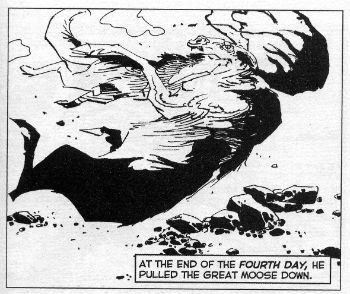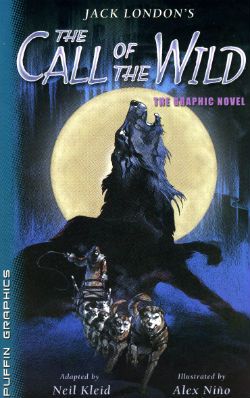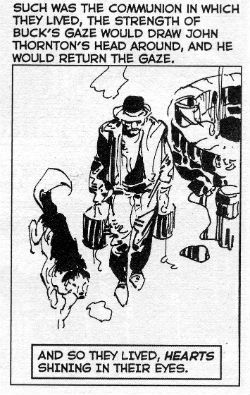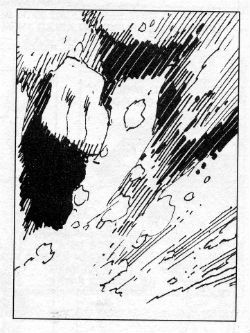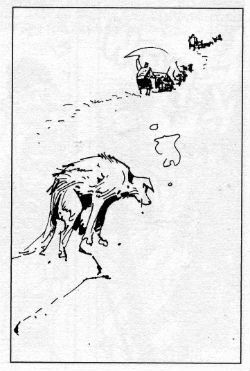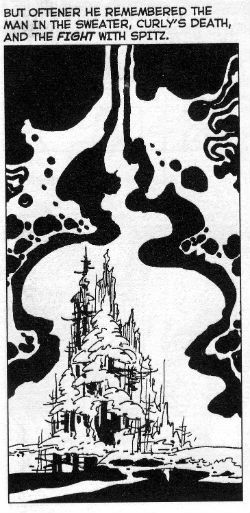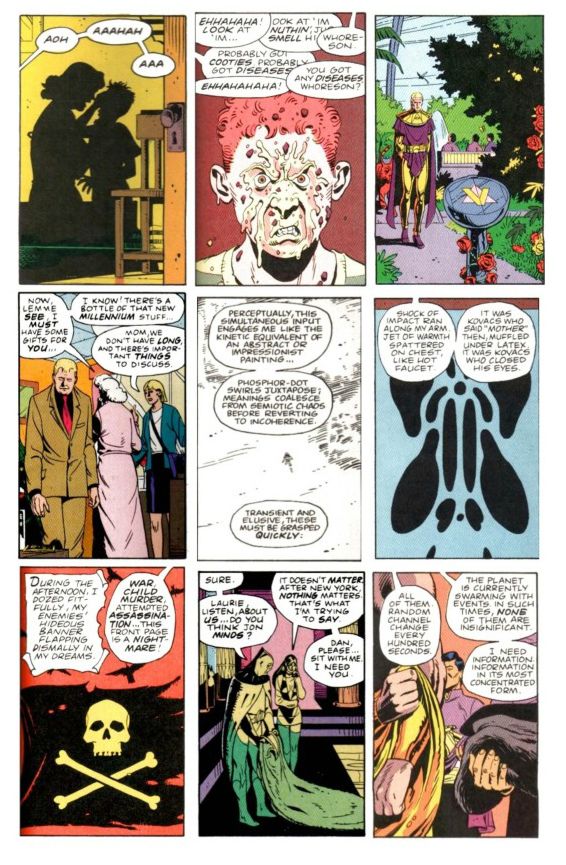 From the thirteenth issue of Watchmen by Alan Moore and Dave Gibbons, assembled by Miguel Corti.
From the thirteenth issue of Watchmen by Alan Moore and Dave Gibbons, assembled by Miguel Corti.
The episode--she is long! (Just a bit over two hours and forty minutes, in fact.)
The show notes--they are extensive!
So join me after the jump for both, and a bit more about Watchmen issue #13!
Oh, and hey, let us know how this episode sounds to you, eh? I gave a listen to the sound quality of the first call before throwing it into Levelator and thought it sounded...really okay? So I'm mixing this raw.
0:00-3:38: So, is this episode where Graeme is Goofus and Jeff is Gallant? (Spoiler: No.) But Jeff is much more chipper than last week, certainly. At least until we starting discussing...
3:38-6:18: Comics! (More specifically, Marvel Comics.) (Ultra-specifically, the twenty variant covers for Uncanny Avengers.)
6:18-28:46: Which leads us into discussion of Avengers Vs. X-Men #12 which Graeme has read and Jeff has not so it's time for some heavy-duty recapping on the part of Mr. McMillan.
28:46-43:52: Getting back to twenty variant covers situation, we ponder whether the fact Uncanny didn't outsell Walking Dead #100 is... a good thing? A bad thing? Just a thing? [Insert "It's Clobbering Time" joke here, as appropriate.] This ping-pongs us back to talking about (for lack of better expressions) "natural" events vs. "forced" events with Avengers Vs. X-Men, its sales, and whether or not the event was review-proof.
43:52-55:09: Sensibly, Graeme uses the recent (stunningly great) Grantland excerpt of Sean Howe's Marvel Comics: The Untold Story to compare and contrast Marvel's current marketing and operating approach with those prior. The more things change, the more they stay the same? Well, maybe as far as killing off major characters and trying to capture female readers go. But if you've ever enjoyed listening to us talk about Steve Englehart and Jim Starlin, you should most definitely check out the excerpt...and probably the book? (Also, if you haven't seen Howe's amazing Tumblr, check that out too.
55:09-59:40: Another book up Graeme's sleeve: Batman #13, the first part of the upcoming "Death of the Family" storyline. Jeff counters with Action Comics #13 by Grant Morrison and Travel Foreman.
59:40-1:06:04: Graeme talks a bit about The Nao of Brown by Glyn Dillon, published by Self Made Hero and distributed in the U.S. by Abrams. For you pull-quote types: Graeme McMillan says "It is just a blinding book" and "the most beautiful comic I've seen in the longest time."
1:06:04-1:29:19: This gives Jeff an opening to talk about Gordon Harris' self-published graphic novel, Pedestrian, Graeme mentions Josh Cotter's Skyscrapers of the Midwest which we hunt up on Comixology. Doing so reminds Graeme he had also read the digital only sequel to Chris Roberson's Memorial... which leads us to spend a few minutes kicking around the can that is digital pricing and real vs. perceived value using such varied examples as a Digital 2000AD subscription, Saga, Valiant's digital editions, Bandette, Comixology sales, full-price books from Marvel and DC, Shonen Jump Alpha, and more.
1:29:19-2:02:32: A quick rundown by Jeff of the other books he's read this recently: Harbinger issues #1 and #2, a detailed discussion with Graeme about Amelia Cole and the Unknown World, Black Kiss #2.3, Fatale #8, the very strange saga that is issues #7-10 of Star Wars by Roy Thomas, Don Glut, Howard Chaykin, and Tom Palmer, Axe Cop: President of the World #3, a stunning story by Michael Fleisher and Alex Nino from Showcase Presents House of Mystery (Vol. 3) (and thanks, Dylan Cassard, for that one--you should check out his podcast and podcast-related Kickstarter). All of which reminds Graeme (somehow) that he's also read issue #0 of The Phantom Stranger.
2:02:32-2:18:48: Also, Graeme has read Thanos: The End by Jim Starlin as well as The Return of Thanos trade paperback featuring both issues of The Thanos Quest. We talk about that, a little bit about Englehart's first issue on Silver Surfer with Marshall Rogers, The Annihilation books, DC's Cosmic Odyssey, as well as Graeme's favorite Green Lantern. This is what happens when you meet a stranger in the Alps!
2:18:48-end: And then, finally, we talk about the stunner that is the 13th issue of Watchmen, which listener Miguel Corti assembled after a discussion Graeme and I had on-air about just such an issue being via random cut-up of the first twelve. Here's Miguel talking about the idea and how he executed it, excerpted from our correspondence:
Anyway, my original plan to show my appreciation for the effort you put into creating a show that I enjoy listening to was to make something for you based off of a throwaway idea from one of the episodes that came out in either early 2012 or late 2011. In that episode you discussed the idea of creating a 13th issue of “Watchmen” based on randomly picking panels out of the graphic novel and rearranging them until you had this ersatz issue. I was intrigued by the idea since I had just finished re-reading “Watchmen” and re-watching the movie version because I wanted to thoroughly compare the two and see why the book works and the movie doesn’t, especially since Snyder was so slavish about adapting the source material. Well, a little synchronicity was all it took to get my creative blood flowing, and I decided I would make that heretofore nonexistent 13th issue as way of further analyzing the superb work Moore and Gibbons did with that book, and maybe as something you might be interested in seeing.
[...]
What follows are the steps that went into making this issue. Please skip to the end if the details hold no interest for you.
First, I had to find a copy of “Watchmen” that wouldn’t object to being gutted and mutilated so heartlessly. Not as easy as I thought. The only copy I had here in Japan was the Absolute Edition, and my softcover TPB was in the states. I just wasn’t up for taking digital photos of such an unwieldy book. So, I bought another softcover (used from amazon.co.jp) and tried taking pictures with that. Again, the quality wasn’t what I wanted. For a split second I contemplated cutting up the softcover, but fortunately the rational side of brain pointed out—quickly—that I would end up only being able to use the panels from one side of a page. So then I thought: a-ha! This is the digital age! I can just download a copy from DC and then take screenshots with the iPad and then transfer them to my computer. Well, wouldn’t you know it, but for whatever reason, none of the digital comics providers were selling “Watchmen.” No one. Not even DC. (This may have changed in the intervening time, but this was the fact of the matter when I started this project earlier this year.)
So, I turned to the pirates, and found a PDF of the entire series and downloaded it. I’m not proud, but since I had already purchased the book 3 times in my life, this was as close to a victimless crime as I was going to get. (Unless, of course, you count all the people who were leaching off my seed with bittorrent while I was downloading it. There’s a chance some of them never have and never will buy the book.) If I could have found a proper digital copy (which would have made the work a lot easier) I would have gladly bought it. Unfortunately, I had to come to terms with the moral ambiguity of the situation and move on.
Next, came breaking down the work. I remember you had discussed that the book was a 9-panel affair throughout. In theory, yes, but there are a lot of double and triple panels throughout the book. Each page is built on a 9-grid layout, however. In some places, there are a whopping 18 panels on the page, but they’re still laid out with the 9 grids. I assigned each grid a number. For example, the panel in the top right of page 5 in issue 1 with Rorschach picking up the Comedian’s happy face pin would be 1-5-3 (issue 1, page 5, panel 3). The panel after it would be 1-5-4. I made an Excel sheet with the entire book broken down like that. I needed the numbers to all fit within the margins of the paper I was going to print out, because I was going to cut them up and literally pull panel/grid numbers out of a hat. (It ended up being a plastic bag.) Unfortunately, all the issues don’t have the same page count, prohibiting me from doing a simple copy/paste over the whole file. The first issue is 26 pages, then issues 2 through 11 are 28 each, and issue 12 is 32.
After sorting that out, I printed out the file and sat down to cut it up. But, wait! On the last panel of every page, the panel is always abbreviated to allow space for a quotation in a black box. I couldn’t have my 13th issues without one of those, so I needed to separate the 9th panel/grid for each issue’s last page from the rest of the panels. I highlighted them so I could find them after cutting up the pages, and set those 12 scraps of paper aside. (The one I ended up using in my issue is from issue 5.)
Having cut up all the pages, and placed all the scraps in a plastic bag, I thought it would be easy as pulling numbers out of hat. I was wrong. Again, it’s that damn 9-panel grid that messes with you. Sometimes some panels take up more than 1 grid space, and that would alter what I was trying to do. Usually, I would pull 9 scraps out of the bag, and then record them in the order I pulled them. Then I would copy the panel from the PDF into a Word document. I ran into trouble when, for instance, I would go to get the panel matching the number on the 3rd scrap of paper, but it would turn out to be a 2- or 3-grid panel, or more on some occasions. This meant I had to discard that scrap for now, and keep pulling new one’s until I found one that match the space allotted.
What the last two paragraphs showed me is that even though I tried to make my fake issue as random as possible, that randomness was still subordinate to the original work. You can only imagine the relief I felt at work saved when the first scrap I pulled for one of the pages happened to be from the grid of one of the full-page panels in issue 12. That was the easiest day of copy-pasting-cropping during the whole project.
For the last page, I pulled a scrap from the final panels first because, well, not all of them only occupy one grid’s worth of real estate. This was the only time I went out of order.
Finally, I needed an ersatz cover for my ersatz issue 13. As you probably already know, the cover images of the original series all lead in to the first panel of the interior art. I took my cover from the panel before 10-16-2. If I was any good with Photoshop, hell if I even owned Photoshop, I would have been able to edit out that tail from the word balloon, but so be it.
OK, enough of the nuts and bolts. What did I learn?
First, the issue itself.
It’s just as unreadable as you would imagine an endeavor like this to be. However, there are some interesting aspects that illuminate the whole.
1. Dave Gibbons drew way more 2-or-more-grid panels than I remembered, which shows how important the size and pacing of the layout was to the story. Every time I come across a comic with half a page’s real estate devoted to something mundane like a plane flying or a car driving, it makes me want to drop the book. I don’t know if the writer or the artist is to blame, but most of the panels in modern comics don’t require that much space, especially now with the shortened book lengths. Gibbons and Moore paced “Watchmen” perfectly, and when panels are drawn bigger than average, it’s for an important reason. The opening full-page panels of issue 12 are shocking because Gibbons held that back until the very end. And despite their size, you’re not sure of what your seeing because you’re visually overwhelmed (at least the first time through), which is the disorienting feeling, I believe, they wanted to convey. Every time I read a comic now that ends with a full-page splash of just a person sitting in a darkened room with no visible background, I want to throw it across the room. And then maybe walk over, pick it up, and tear it apart. Too many modern comics writers and illustrators are just piss-poor storytellers. Whatever your opinion of the work “Watchmen” may be, I think it’s hard to argue against the fact that it is pure comics from start to finish. It’s rare to find creators who actually embrace the medium and do what books and film cannot. I spend an inordinate amount of time thinking about this because it is tangential to my field of employment (video games) where too many games are trying to be movies instead of doing what they should be doing: being and interactive medium. Games that fail to be interactive are doing a disserve to the consumers, and comics that settle for storytelling that could just have easily been done in a movie or book, or even better in those media, are doing a disservice to comics readers everywhere.
2. As the narrations of Rorschach and Dr. Manhattan are the most prevalent in the work, their panels in this composite issue have a weird interstitial effect of ordering the randomness of the chosen panels. It helps that in many of Dr. Manhattan’s source narrations he was already jumping around the timeline, so it doesn’t feel out of place here. Many of Dr. Manhattan’s panels tied eerily to the next panel, although the placement was random and almost always from a non-sequential section of the story. For example, on page 12, panel 3, Dr. Manhattan narrates, “They’re shaping me into something gaudy and lethal…” Then the next panel depicts Adrian in his gaudy purple suit swinging a post at his erstwhile assailant. On page 13, panel 2, Dr. Manhattan again narrates: “Laurie’s met him several times. She says his name is Dreiberg.” In the next panel Nite Owl and Silk Spectre are locked in a kiss. There are many other pieces of synchronicity, but the best are tied to Rorschach and Dr. Manhattan because of their strong narratives. In my issues 13, the story becomes Dr. Manhattan’s tale to tell, with Rorschach in a supporting role, a victim of the event surrounding him. One could argue that this isn’t too far from the original’s narrative. The fact that it continues to be so in this jumble I have assembled speaks to the focus and intent of the original. Or maybe there were just too damn many Dr. Manhattan panels to begin with.
3. Almost all of the commentary on politics and the Cold War itself is lost in my issue. Time is the only strong theme from the original work that remains. Again, that is one of Dr. Manhattan’s themes. The lack of that political backdrop robs the story of some of its weight. I felt that when I watched the movie version too. Because although Snyder is almost slavish in adapting the source material, he does it ever so superficially. Sure it’s still set in 1985, but it doesn’t feel like the world is on the brink of a nuclear war in the movie like it did in the book. New York doesn’t really feel like the dirty, crime-drenched metropolis of the ‘70s and ‘80s. In the book, despite all the advances in technology, New York still remains a non-gentrified, citywide slum, which is exactly what the mass media wanted you to believe about New York in the ‘80s. Snyder’s New York is too aestheticized to feel like it ever needed vigilantes in the first place. This also ties into the altered ending as well. I understand that a faux alien invasion spearheaded by a giant squid would have been a tough pill to swallow for viewing audiences of Snyder’s “realistic” superhero movie; but the fact of the matter is, Snyder revealed his ignorance of current affairs when he made that film 8 years after 9/11. In the book, just like after 9/11, it’s believable that the world would stand with the United States after the tragedy that had befallen it. In the movie, however, the fake Dr. Manhattan attacks hit cities around the world, not just New York. Again, not wholly bad, because of the fact that it was Dr. Manhattan and not an outsider, a la the alien, I have a hard time believing the world would unite in global cooperation. What’s more likely is that the world would erupt in furor at the U.S. for creating Dr. Manhattan in the first place. The U.S. would be culpable in the world’s eyes. What’s worse is that in the context of the movie, there’s nothing for the people of the world to not assume that this wasn’t an attack by the U.S. aside from the fact that the U.S. was hit as well. Since the world knows Dr. Manhattan was created in an accident, how does the world know that a preemptive attack by the U.S. on the Soviets didn’t backfire on them when they tried to exploit Dr. Manhattan?
As you'll hear on the podcast, Graeme and I greatly enjoyed reading Miguel's assemblage, and we wanted to give you the opportunity to check it out and get inspired for yourself. [link is 22.8MB] And as I mentioned to Miguel in an email to him, I found this project and his analysis to be a tremendous DIY counterpoint to Before Watchmen--it really is a way to revisit Moore and Gibbon's story while respecting the original achievement. We are incredibly pleased to have played even the most indirect part in this project.
Hmm, feel like I'm forgetting something? Oh yes, the podcast, the podcast... As tempting as it would be to add to the artsy shenanigans and leave only these notes and the book as a type of seashell on the beach for you to find, Episode 102 is indeed out there in the world (provided you define "the world" as your RSS provider of choice) and you can listen to it here as well, should you choose:
Wait, What?, Episode 102: Age of Chance
As always, we hope you enjoy...and thanks for listening!
